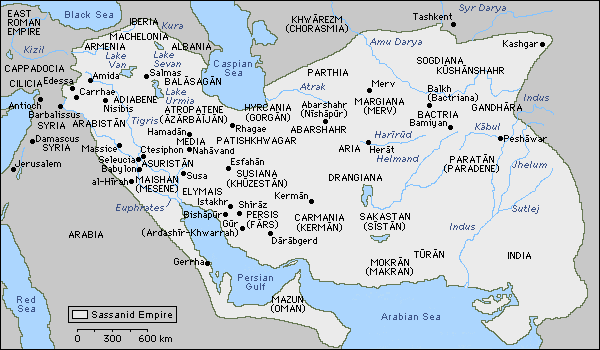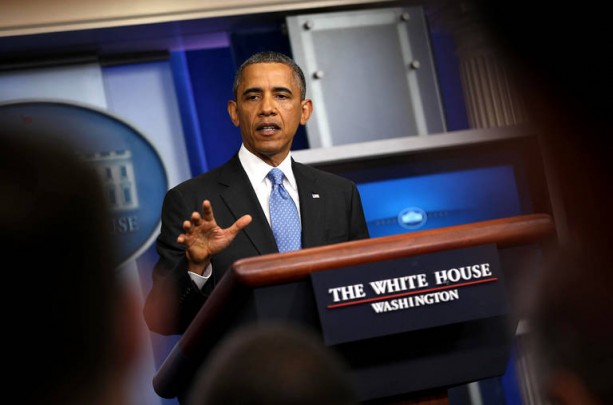Andrew McKillop
21st Century Wire
RULE ONE: DON’T LISTEN TO OBAMA OR HOLLANDE
Even at home not too many listen to either of them, and opinion polls shout the bad news – but what great leader worries about opinion polls?
 In their heart of hearts, what they really want in the Middle East is a nice little downsized, Saudi-financed, quick-and-dirty little war – so we would supposedly be churlish to deny them their fun. Possibly to them and a chosen-few “expert” advisers this will be almost as good as the Iraq war of 1991, or Kosovo in 1995.
In their heart of hearts, what they really want in the Middle East is a nice little downsized, Saudi-financed, quick-and-dirty little war – so we would supposedly be churlish to deny them their fun. Possibly to them and a chosen-few “expert” advisers this will be almost as good as the Iraq war of 1991, or Kosovo in 1995.
Libya in 2011, however, already fell off the teleprompter. Nice people don’t talk about it anymore. The US ambassador got killed in a street rage attack, called Islamic, or something. Susan Rice and Hillary Clinton told us it was started by some YouTube video, or was it MTV?
Their downsized imperial dreams however, really do have jumbo-sized competitors and rivals, and we do not have to start with either the Saudi super-sized portion of princely princes and kings and their “Islamic Pope” story, invented for them by the US State Department of the 1950’s and endorsed by President Eisenhower, or the “Greater Israel” Zionist mob who want to stretch their empire dreaming far beyond the Euphrates to Yahweh knows where.
The Persians, now known as Iranians also have an Imperial Dream, in fact several of them for example the so-called Golden Era Sassanid Empire which held sway until about 650 AD.

IMAGE: Lessons can be learned from the old Sassanid Empire.
DEVIL IN THE DETAILS
The above Golden Era empire was not concerned with desert areas – because nobody lived there – leaving the future Saudi Arabia, minus its eastern main oil-producing regions, as potentially able to be called “never under Persian rule”. Another interesting detail was this Iranian empire only started falling apart – when Islam started growing as a religious revolution, from about 800 AD. Making things tougher for the Saudis, the self-styled Defenders of Islam, much of what was later called Islamic culture expressed as artworks, architecture, poetry and philosophy was transferred from the Sassanids – to the Muslim world. The Saudis supplied the religion. The Iranians supplied everything else which today is called Islamic tradition and culture.
During the Sassanid empire, Persia had as many as 13 ambassador-level permanent missions in China. Both empires firstly created then benefited from trade along the Silk Road, and acted from common interest to preserve and protect that trade. They cooperated guarding the trade routes through central Asia. Both empires built outposts in border areas to keep caravans safe from nomadic tribes and bandits – not yet including d’jihadis in a Toyota Hilux. Shapur I of the Sassanids extended his authority into the northwestern Indian subcontinent, now Pakistan and Afghanistan, then called the western Kushans, itself a semi-autonomous empire under Persian suzereinty. Although the Kushan empire declined from about 400 AD and was replaced by the Indian Gupta empire, the two were highly intermixed and the Sassanids remained powerful in what is northwestern India today, for centuries. India has long cultural ties with Iran and no real interest in applying US-led sanctions against Iran, today.
Persian imperial decline is attributed by historians to a range of factors. Other than imperial overreach there was internal ideological conflict firstly on Greek philosophy, then on Christian philosophy, and subsequently on Islam. Sassanid kings were patrons of letters and philosophy. Khosrau I of the empire had the works of Plato and Aristotle translated into Pahlavi and even read them himself. When Roman emperor Justinian I shut down Aristotle’s schools in Athens, seven of their professors fled to Persia and found refuge at Khosrau’s court. Iran’s main religion of Zorastrianism was split into rival, or “reform” movements, well before the end of the Sassanid empire. Both Christianity and Judaism were widely spread.
The so-called Islamic conquest of Iran was at first very slow, and probably took 400 years to complete to the point where it was the majority religion, about 1100 AD. During that time, both Sunni and Shia movements co-existed, but by 1300 AD Shia dominated inside Iran while Sunni-Shia conflict continued for centuries through external warfare in which the Persian empire lost sizeable territories, for example to Turkey’s Sunni armies of Tughril Beg. Some historians argue the speed and extent of secularization, the separation of the church and state was faster in Iran than in Sunni-majority Muslim countries, simply because of the proven ability of Sunni-Shia rivalry to cause heavy conflict.
Discussion about why Iran had an Islamic Revolution in 1979-1981 and is now an Islamic Republic fills bookshelves. In major part Khomenei’s rise to power was enabled by Western meddling, as well Shah Reza’s ruritanian-style but vicious police state. One certain game changer was that long before the last Shah, the ulema-clergy class professionalized itself, somewhat like doctors and lawyers. The previous wayside preachers who spent a half day each week transmitting their favourite one-liner traditions, disappeared and a highly ambitious ulema class emerged. Laws set by Reza Shah that created the infamous SAVAK secret police, made military service obligatory, and forced European-style clothing and even table manners on Iranians, provided ample speech material for the ulemas, talebeh and mullahs. At the same time, after Khomenei’s revolution, the Islamic Republic’s constitution recognizes Zoroastrian, Jewish, and Christian Iranians as religious minorities, and permits Sunni Iranians to have their own mosques – where they are the local majority of the population.
THE EMPIRE GOES TO WAR – OR MAYBE NOT?
In an interesting report published by Stratfor on September 4, 2013, an analyst suggests that while conventional wisdom has it that a weakened Syria will undermine Iran’s regional influence, a US-led military intervention could actually benefit Tehran. One main argument by Stratfor is that if the United States launches an attack, this will enable Iran to “exploit Washington’s visceral opposition to Sunni jihadist and Islamist groups to gain concessions elsewhere”, in the region, and concerning the creaky but dangerous Iran nuclear crisis.
Don’t expect that Secretary of State John Kerry, or President Obama for that matter, will have read much or been engaged in any deep discussions on the history, nor will they have attended any Richard Cheney nation-building workshop sessions. They are both too engrossed on figuring out how to reverse engineer a chemical weapons attack with Bashar al Assad as the trigger man. If they fail on that task, then Kerry’s job is to take the hit, while Obama keeps his Teflon clean, taking rear guard action if he must in order to protect his party’s chances in 2016.

OBAMA: Not involved in any serious planning regarding Syria or region – his job is to sell the intervention.
This same report also argues that despite Syria being a critical Iranian ally, and al Assad’s survival is of prime national security interest to Tehran, it “cannot afford to directly retaliate against the United States”, but is widely expected to retaliate indirectly by proxy war, starting with Lebanon’s Hezbollah. Reading down Stratfor’s strategy briefing, the gaps and voids of perception, and potentials for “objective ally” cooperation, or “false flag enemy” fighting between Tehran and Washington jump off the page. One question Stratfor doesn’t answer is why Iran is playing so low profile and quiescent on Syria, but does cite the August 29 Op-ed of Hossein Mousavian, a close associate of new Iranian president Rouhani who said that present maneuvring by Washington for regime change in Kabul, prior to US departure is “a blueprint for collaboration between Washington and Tehran”. Mousavian called for US-Iranian cooperation to better manage the MENA’s crisis-ridden region.
Further arguments by Stratfor and other analysts focus the extent and range of any missile attacks or airstrikes on Syria – able to further divide the highly fractured rebellion movement between factions that oppose military intervention and those that favor it. Iran not only has its Hezbollah fighters – more an army than a militia – but its other Lebanese and Iraqi allies are surely heterogeneous but large in number and sometimes well armed. The Iranians, while professing support to al Assad, can speed up and better manage the rebellion, taming radical Islamist elements, and not be the enemy the US fears – and both Saudi Arabia and Israel want.
SYRIAN HEADBANGERS
In any case, Syria’s “secular opposition” has been overtaken by the sheer scale of mayhem, and its unarmed and declared non-violent factions are on the sidelines in the civil war which has de facto shifted power to the multitude of armed groups. Because these elements have been gaining territory, the United States and other western powers will likely need Iranian cooperation to forge any kind of Syrian polity that can survive and hold together. By contrast, subjects like the incredibly long running Iranian nuclear controversy are downsized by the Syrian crisis – but the Iranian government has linked these two issues and will go on linking them.
We are in no way obliged to see this as a Happy Ending – the end of the Syrian crisis without the Toyota Hilux mob of d’jihadi gangstahs taking total control, as well as the end of the Iranian nuclear crisis – but it may be possible. Iran itself is light years away from being a regime just waiting to fall apart at the first push or knock it gets.
With powerful help from the Syrian crisis, this reality dating from the Sassanids has seeped into Washington’s slow-minded consciousness.
READ MORE FROM THIS AUTHOR AT: 21st Century Wire McKillop Files
*****















